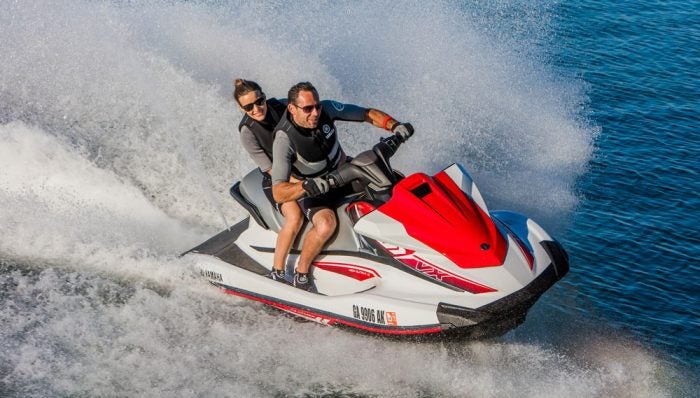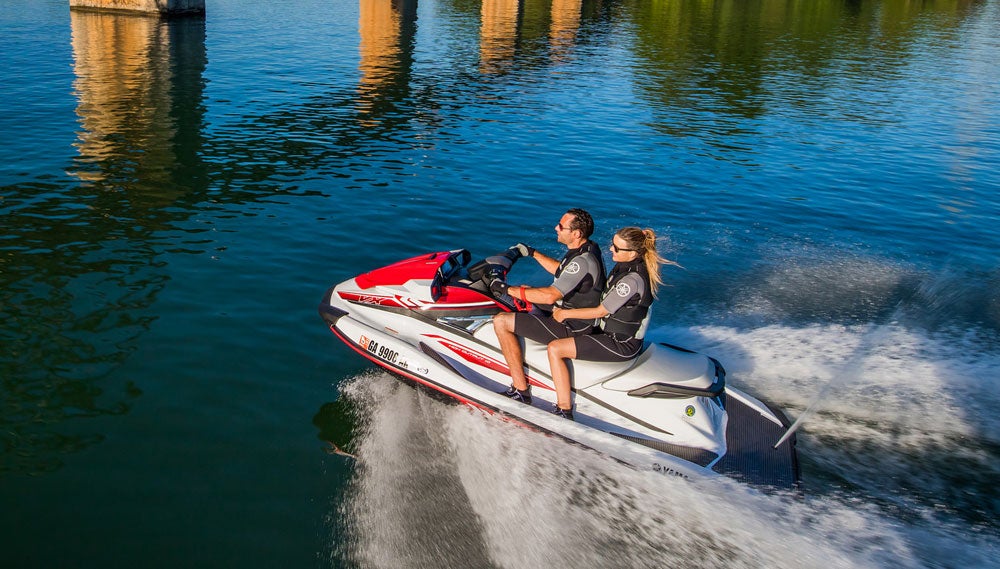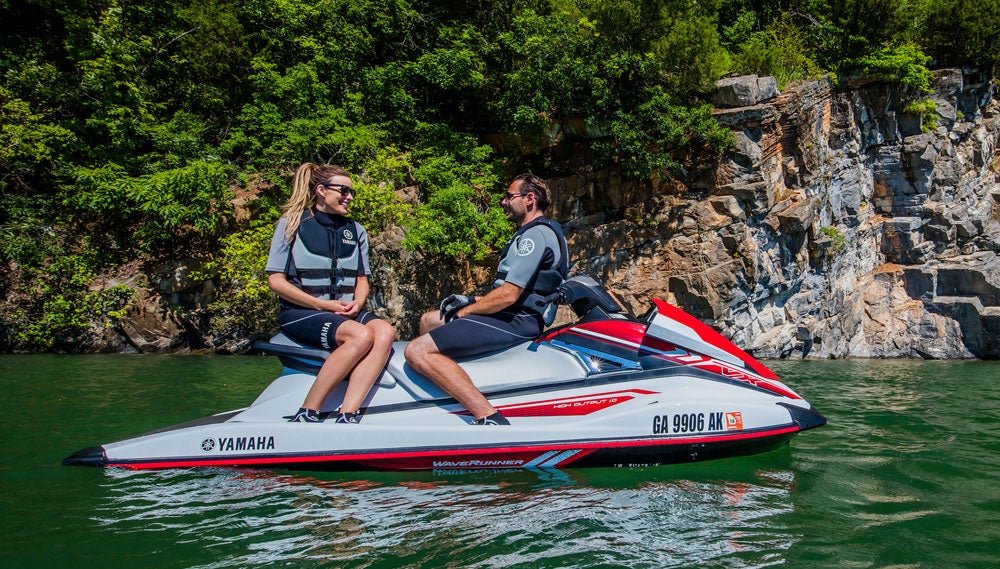2017 Yamaha VX Review
Flagship personal watercraft generate the most buzz, low-priced introductory models ring up lots of sales, but it’s often the overlooked midrange models that serve as the best fit for many consumers. The 2017 Yamaha VX continues to bolster that argument.
It offers much of the style of the flagship FX line, a hull capable of handling a wide variety of water conditions, and amenities like RiDE, Yamaha’s innovative dual-throttle system. It also offers a fuel efficient engine that will stretch your gas budget through the season, and run happily in the mid-50 mph range.
Fuel-Efficient Power
Engine: Naturally aspirated 1,049cc Triple
Fuel Capacity: 18.5 gal.
Stowage Capacity: 24.6 gal.
Seating Capacity: 3
MSRP: Starting at $9,599
The 2017 Yamaha VX is powered by the new-in-2016 TR-1 HO engine, a compact, 1,049cc triple cylinder that weighs in at 160 pounds. It’s more powerful than the former MR-1 engine (by about 13 hp according to Yamaha), but the difference is mostly noticeable in terms of the crisp, smooth power delivery through the low and midrange of the powerband. Top speed remains in the neighborhood of 53-54 mph, not a flagship speed by any means, but certainly one that fits the boat’s midrange placement and one that is more than adequate for watersports towing.
It’s an extremely fuel-efficient engine; at 30 mph, only 3.7 gallons are consumed an hour. That number remains in single digits even at full throttle, totaling only 8.3 gph. It’s also proven to continue Yamaha’s legendary reliability.
That engine sits within a familiar hull and deck. It’s comfortable and more than capable in rough conditions, with a solid, predictable ride that will please newbies as well as experienced PWC enthusiasts. Throw your weight around appropriately and you can bring out the hull’s playful or aggressive side. The hull’s lean-in turning style is intuitive; soft chines encourage the boat to naturally roll into a turn. As to the exterior styling, think the FX more than the new EX line. Lines are masculine, especially around the bow storage lid and dual rearview mirrors. The split seat is comfortable, if a bit broad, and sports subtle contours both for support and to position passengers in comfort.
Enhanced Deceleration and Reverse
Like nearly all Yamaha models, the standout feature on the 2017 Yamaha VX is RiDE, the company’s dual throttle system. The traditional starboard throttle applies power in forward; a new portside throttle overrides the normal throttle when applied and, by dropping the reverse bucket, causes the boat to go into reverse at idle speeds or rapidly decelerate at speed. Release both and the craft assumes a neutral mode. RiDE is simple and intuitive. Spend a few minutes getting to know the ins and outs and you’ll be docking in tight quarters like a seasoned pro.
Other features of note include a simple, but comprehensive information display, a deep glovebox with two cupholders, a reboarding step, ski tow hook, and EVA traction mats. There’s also a small watertight storage under the aft section of the saddle, as well as the traditional bow storage tub. Total storage measures in at 24.6 gallons.
Befitting their position in the line, VX models receive a higher level of fit and finish. Hull and deck are formed from Yamaha’s lighter weight NanoXcel material. For ’17, the craft features a black hull, Pure White deck, and Torch Red accents, the latter most notable on the storage cover that makes up much of the bow.
Comparable models? Sea-Doo’s GTI SE includes electric trim, a similar take on electronic reverse, and is comparably priced at $9,599. The switch to the Rotax 900 HO ACE engine, however, means the craft is a step below the 2017 Yamaha VX in terms of power delivery. Kawasaki’s STX-15F ($9,699) is noticeably more powerful than either craft, but lacks any form of a modern electronic reverse or trim.
Get PersonalWatercraft.com in your Inbox!
Like PersonalWatercraft.com on Facebook
Comments
Most Popular

Remembering the Sea-Doo XP

2025 Yamaha JetBlaster PRO 2-Up Review

2024 Kawasaki Jet Ski STX 160X Review

2024 Yamaha GP HO Review

2017 Kawasaki Jet Ski Ultra 310LX Review


















 Your Privacy Choices
Your Privacy Choices